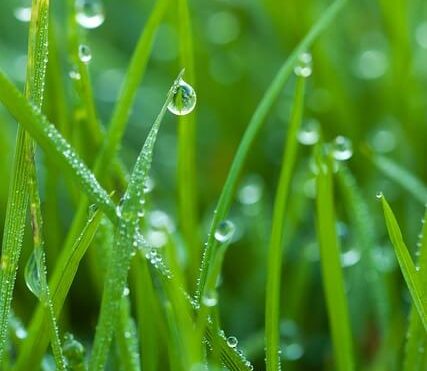It can be tough to figure out when the best time is to water your grass. You don’t want to underwater it and cause damage, but you also don’t want to drown your grass by overwatering it. The location of your property has the biggest effect on how much water your lawn needs. In this blog post, we will discuss how long you should water your lawn and how often you should water it to avoid any problems.
The Best Time to Water Your Lawn
The best time to water your lawn is in the early morning hours before the sun gets too high—usually between 4am and 9am. This time frame allows the water to seep into the ground and reach the roots of the grass, which is the most important part of watering your lawn. Watering grass during the hottest part of the day does no good because the water evaporates before ever reaching the grass roots. If you water in the evening, the water will oversaturate your soil and remain on top of the grass for a longer period, which will inevitably lead to fungal problems.
How Long to Water Your Lawn
How long you should water your lawn depends on several factors. Specifically, it depends on the type of grass you have, weather conditions, how dry your soil is, and your soil content. As a general rule, the ideal watering schedule is once or twice per week in cool months and three times per week in warmer months for about 30 minutes per watering. Unless you are watering newly planted grass seed, there is no need to water every day.
Tell-Tale Signs You’re Overwatering and How to Avoid It
If you’re unsure of how long to water your lawn, there are a few signs that will let you know if you are overwatering:
- Check for puddles or lawn depressions – The first sign of overwatering comes when the water starts to puddle on the surface of the grass. An easy way to test this if you don’t see visible puddles is by stepping on the grass. If your foot leaves a soggy imprint, you know the ground can’t absorb any more water.
- Wilting grass, mushrooms, and root rot – Overwatering can cause your grass to become dull and wilt to the point grass blades don’t bounce back into shape after being pressed down. This wilting can lead to excessive mushroom growth and even root rot, which is a fungal disease caused by too much moisture in the soil. Root rot is easily spotted by brown and yellow grass usually accompanied by grown, gray or slimy roots.
Overwatering can be extremely detrimental to the health of your lawn so here are some tips to avoid it.
- Check the ground moisture – Before watering your lawn, check the conditions below the grass line. A healthy, well-established lawn should have damp soil at least 6 to 12 inches down. To test this, insert a screwdriver into the soil and if it easily sinks 6 or 7 inches, then you are watering your lawn an adequate amount.
- Measure the water – Measure how much water your lawn is getting using an outdoor measuring tool or with something as simple as empty tuna cans. Place the rainwater measuring cup or tuna cans somewhere they will get hit by your sprinklers. Your lawn should get about 1 to 1.5 inches of water per session. That means once the tuna cans are full, you know it’s time to stop watering.
- Set a timed schedule – Generally speaking, you should water your lawn once or twice per week in cool months and up to three times per week in warmer months for about 30 minutes per watering in the early morning hours. This of course depends on the rainfall and other weather conditions so modify as needed.
- Install a sprinkler system –Having a sprinkler system installed that is designed specifically for your lawn will take the biggest hassle out of lawn maintenance. By determining the square footage of your yard, the soil content, your grass type, and mapping the sprinkler system based on what areas get more or less sunlight, watering your lawn can be as simple as setting a timer schedule.
How to Water Fresh Grass Seed on Your Lawn
The biggest mistake people make when watering fresh grass seed is overwatering. This can wash the grass seeds and fertilizer away along with the money and time you put into it. The best way to prevent this is by watering your lawn with a light misting hose, which will lightly water the ground and keep the seed in place. Set your sprinkler timer for 5-10 minutes in the morning and again at midday. If watering by hand or with a hose-end sprinkler, make sure to spray consistently and evenly twice per day. Remember that areas of lawn with the most sunlight need more water, while shady areas need less water. Continue watering twice daily until the new grass has sprouted, then after one more week, reduce watering to one time per day. Once established, you can adjust your watering pattern in accordance with temperature and weather conditions.
Conclusion
We hope this article helped clear up any questions you have related to the best time to water your lawn and how often you should be watering it. If you would prefer to have professional help with your lawn and landscaping needs or want to know more about installing a sprinkler system so you can keep your lawn looking great all year round, contact us for a consultation.

